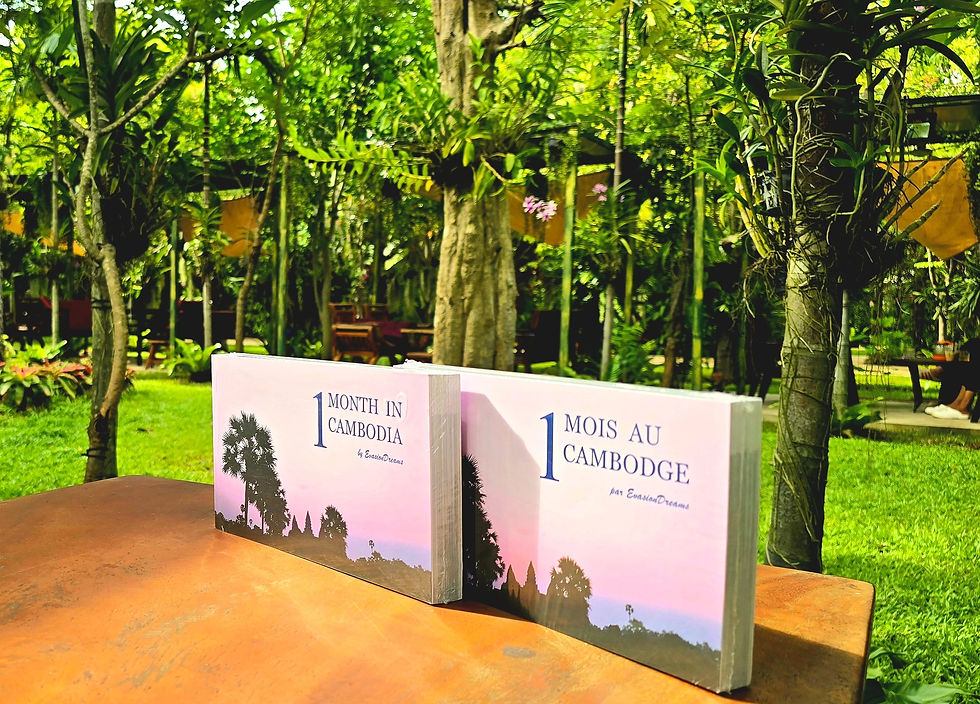Cambodia & Nature: A newly born yellow-cheeked crested gibbon at Jahoo Camp in Mondulkiri
- Editorial team

- Aug 19, 2024
- 2 min read
A newly born yellow-cheeked crested gibbon has recently been observed at Jahoo Camp, Cambodia. The infant, belonging to a female yellow-cheeked crested gibbon from Gibbon Group 2, marks an increase in the group size from five to six individuals.
The Jahoo research team, funded by USAID Morodok Baitang through World Hope International-Cambodia, has been monitoring and studying the behaviour of this gibbon family for four generations since 2013. This makes it the most habituated family group among all four family groups that the Jahoo research team is monitoring.
As stated by USAID Morodok Baitang, the yellow-cheeked crested gibbon is a globally endangered species that inhabits family groups comparable to those of humans, characterised by lifelong mating pairs and multiple generations of offspring.
The juvenile gibbons acquire the fundamental behaviours and feeding strategies prior to dispersing at approximately eight years of age. The interval between births in this species is relatively long, with females giving birth to a new baby only once every 2 to 3 years. Consequently, each birth is a rare event.
In Mondulkiri, the Keo Seima Wildlife Sanctuary plays a pivotal role in supporting the largest population of this globally endangered yellow-cheeked crested gibbon. It is regrettable that these gibbons have experienced a precipitous decline in population, largely attributable to the loss of habitat and the hunting of individuals for the pet trade.
In order to assist in the protection of this endangered species, USAID Morodok Baitang collaborates with World Hope International-Cambodia to facilitate the monitoring and study of the behaviour of four yellow-cheeked gibbon family groups. This is with the objective of habituating them to the presence of the Gibbon Guardians and protecting them from extinction in Keo Seima Wildlife Sanctuary.
Furthermore, the research team has successfully extended gibbon habitat management by a further 445.5 hectares in the initial six-month period of this year, thereby expanding the Jahoo area to a total of 691.3 hectares to date.








AV在线看 AV在线看;
自拍流出 自拍流出;
国产视频 国产视频;
日本无码 日本无码;
动漫肉番 动漫肉番;
吃瓜专区 吃瓜专区;
SM调教 SM调教;
ASMR ASMR;
国产探花 国产探花;
强奸乱伦 强奸乱伦;
AV在线看 AV在线看;
自拍流出 自拍流出;
国产视频 国产视频;
日本无码 日本无码;
动漫肉番 动漫肉番;
吃瓜专区 吃瓜专区;
SM调教 SM调教;
ASMR ASMR;
国产探花 国产探花;
强奸乱伦 强奸乱伦;
代发外链 提权重点击找我;
蜘蛛池 蜘蛛池;
谷歌马甲包/ 谷歌马甲包;
谷歌霸屏 谷歌霸屏;
谷歌霸屏 谷歌霸屏
蜘蛛池 蜘蛛池
谷歌快排 谷歌快排
Google外链 Google外链
谷歌留痕 谷歌留痕
Gái Gọi…
Gái Gọi…
Dịch Vụ…
谷歌霸屏 谷歌霸屏
负面删除 负面删除
币圈推广 币圈推广
Google权重提升 Google权重提升
Google外链 Google外链
google留痕 google留痕
google seo…
03topgame 03topgame;
gamesimes gamesimes;
Fortune Tiger…
Fortune Tiger…
Fortune Tiger…
EPS Machine…
EPS Machine…
seo seo;
betwin betwin;
777 777;
slots slots;
Fortune Tiger…
seo优化 SEO优化;
bet bet;
google seo google seo技术飞机TG-cheng716051;
03topgame 03topgame
gamesimes gamesimes;
Fortune Tiger Fortune Tiger;
Fortune Tiger Slots Fortune Tiger…
Fortune Tiger Fortune Tiger;
EPS машины EPS машины;
Fortune Tiger Fortune Tiger;
EPS Machine EPS Cutting Machine;
EPS Machine EPS and EPP…
EPP Machine EPP Shape Moulding…
EPS Machine EPS and EPP…
EPTU Machine ETPU Moulding Machine
EPS Machine EPS Cutting Machine;